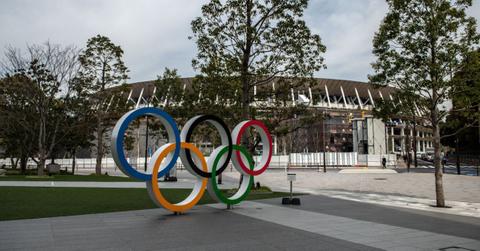There's a Strategic Reason Why Race Walkers Wiggle Their Hips
Published Aug. 6 2021, 2:06 p.m. ET

When it comes to the Summer Olympic Games, you'd be hard-pressed to find a person who doesn't have a favorite sport to watch. While many viewers set alarms for popular events like gymnastics and swimming, others are more fond of the lesser-known sports, which brings us to the subject of speed walking.
Speed walking, which is technically known as race walking, is an Olympic sport with two separate events. In one, men and women compete to walk 20 km (or 12.42 miles), and in the other – which was sadly competed for the very last time on August 6, 2021, in Tokyo – men race to walk 50 km (or 31.06 miles).
But if you've ever caught the event on TV, you might ask yourself why the athletes wiggle their hips while competing and walk with such an unusual gait. Put another way: Why do speed walkers walk that way? Keep reading while Distractify explains.
Why do speed walkers walk that way?
Like with every sport, there is a strategy to race walking. But first, it's important to understand the rules of the game.
According to Vox, which does an impeccable job of breaking down the sport, there is one key rule of race walking that every athlete must abide by.
Rule 230.2 of the sport, called "The Definition of Race Walking," states: "Race walking is a progression of steps so taken that the walker makes contact with the ground, so that no visible (to the human eye) loss of contact occurs." What this means is that unlike in running where both of an athlete's feet are often off the ground, in race walking, one of the walker's feet must always be touching the floor.
"Flight time," which is the technical term for both of an athlete's feet being off the ground, is illegal in race walking and constitutes a disqualifying offense.
But keeping one foot on the floor isn't even what gives race walkers their wiggly walk.
Rule 230.2 continues to specify that "the advancing leg must be straightened (i.e. not bent at the knee) from the moment of first contact with the ground until the vertical upright position." Though the language makes it a little tough to visualize, it's actually this portion of the race-walking definition that gives speed walkers such an unusual gait.
As Vox explains, a walker's speed is equal to the length of their stride times the frequency of their stride. In other words, a speed walker can take long steps or fast steps, but they cannot bend their knees or jump. Since they can't do either of these things to make themselves go faster, they instead keep their hips forward and rotate their pelvis in order to increase their speed, which are the funny features audiences have come to associate with the sport.
And many race walkers actually walk faster than your average person can run. In 2017, British Olympic race walker Tom Bosworth clocked a 5:31 mile. Lithuanian Sada Eidikyte has held the women's record since 1990, with a 6:16 mile.